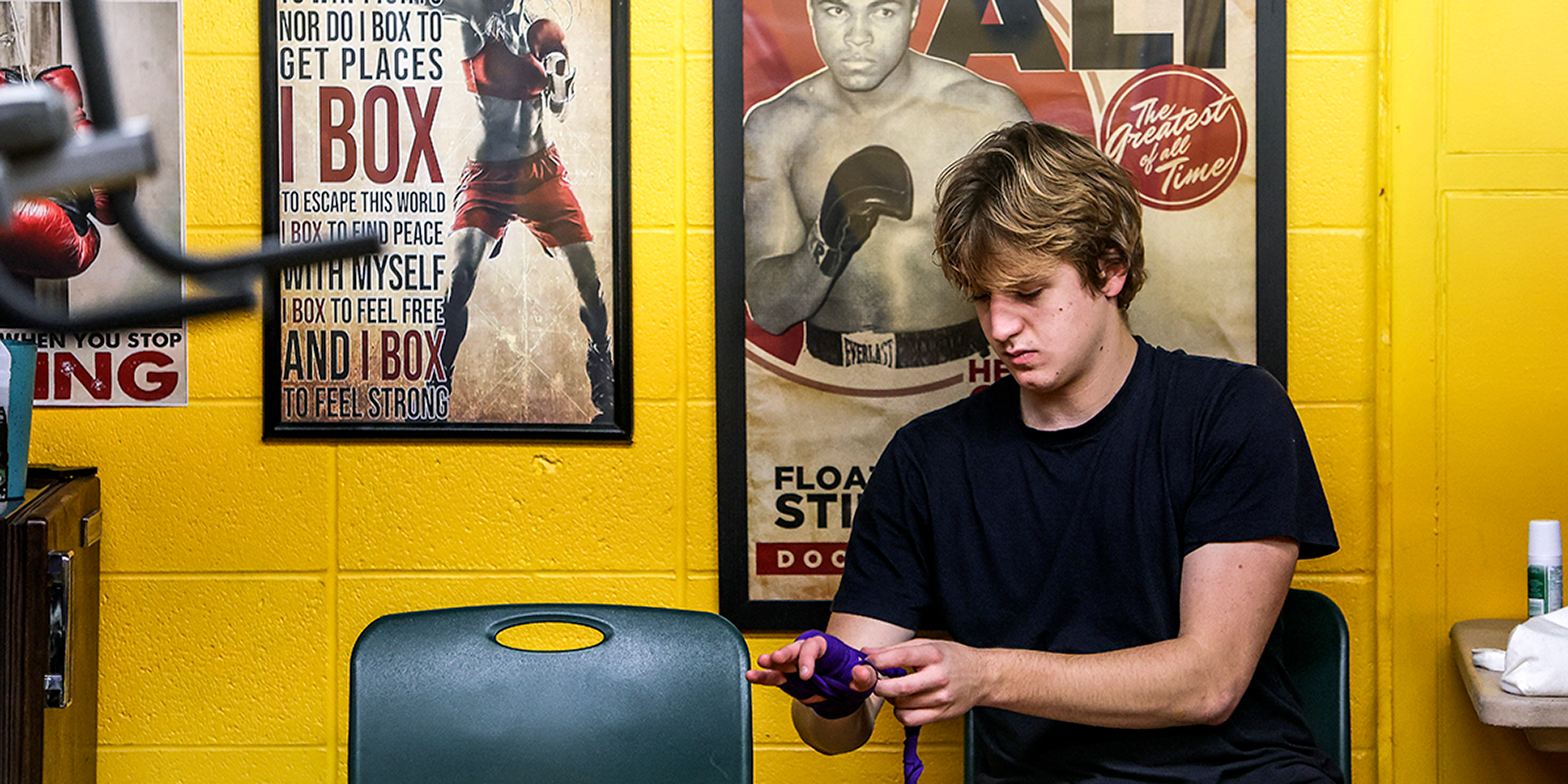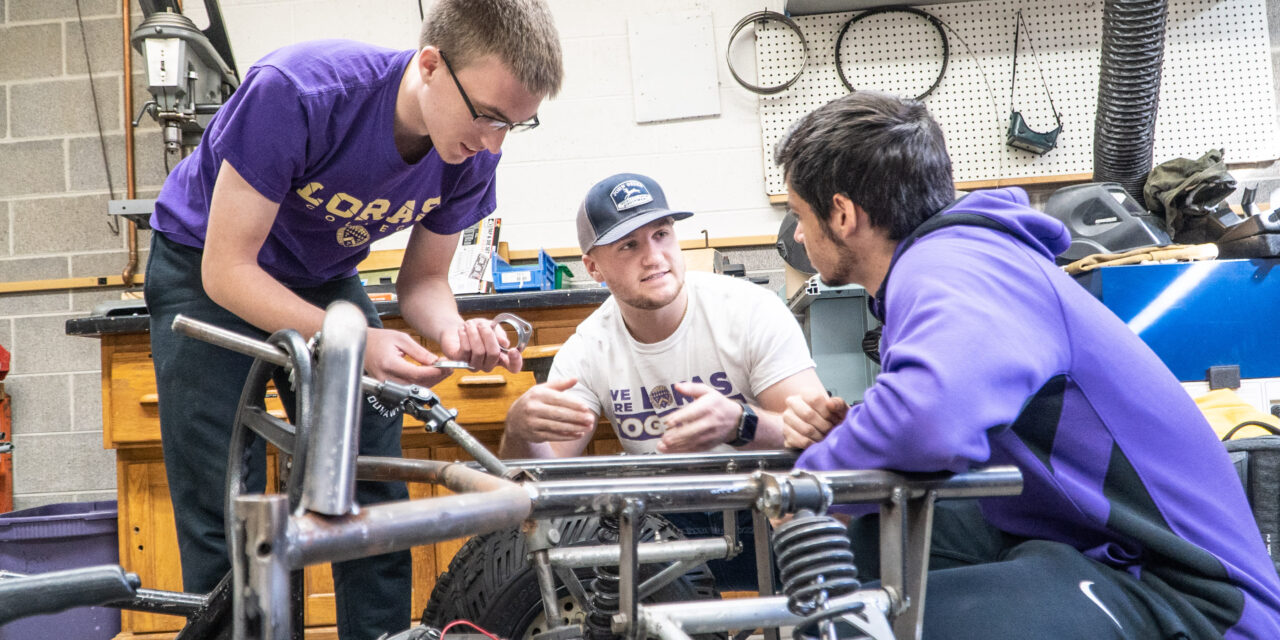By Mark A. Mederson, PhD, assistant professor of media studies and faculty adviser of the student newspaper, The Lorian. Mederson founded and serves as a faculty adviser of the Loras Boxing Club.
I first heard the story about Charlie Mohr when I was in a PhD program at the University of Wisconsin-Madison. The story came up when a freshman from California wanted to join the college boxing club at UW. The problem was there wasn’t one, and Mohr was offered as the reason.
It was Easter Sunday, April 17, 1960, when Charlie Mohr exhaled his last breath. Mohr, a 22-year-old senior at the University of Wisconsin, had been in a coma for eight days. He had collapsed in the locker room after he lost his match at the NCAA boxing national championship, which took place in the UW Field House. Thousands of fans regularly packed the fieldhouse for boxing matches, and Mohr was a fan favorite.
Mohr was the defending national champion in his weight class. He faced Stu Bartell of San Jose State in the 1960 championship match. Wisconsin and San Jose State were NCAA boxing powerhouses. Bartell caught Mohr with a hard punch to the head in the second round that severed a blood vessel in his brain and sent him to the canvas. He made it back to his feet and the locker room before collapsing.
The death of the popular Mohr was felt across the city of Madison. About two weeks after Mohr’s death, the university ended boxing on the campus. Like dominoes falling in a line, other colleges and universities followed, and boxing came to an end as an NCAA scholarship sport in 1960.
I doubt that boxing will ever return as an NCAA scholarship sport, but like a vine on a brick wall, boxing has slowly crept back and spread across college campuses nationwide—this time as a sanctioned club sport.
Wisconsin started boxing as a club sport in 2010, when that freshman from California mentioned above lobbied for it and won. Both Iowa and Iowa State have boxing clubs on campus. And in Dubuque, I started one at Loras College. The club draws students to train on an almost nightly basis.
In January 2020, I was teaching a new winter term class. Loras winter term classes meet every day for three weeks and are required to have an experiential component to them.
I teach mass media, and my course was on conducting film analysis. The topic of all of the films in the class was boxing. In the morning, we watched and analyzed the films—fictional narratives, like “Rocky,” and documentaries. In the afternoon, we went to the cross-fit gym Volv where I taught students how to box.
One of the things students had to do was to keep a daily journal, in particular, about their growth as boxers. As the term neared its end, I noticed several students journaling about their desire to continue the boxing training after the class ended. I had interviewed the student at UW about starting the boxing club there, so I thought, why not try doing the same thing at Loras?
It took over a year to find a space on campus that could be outfitted as a boxing gym. The one I finally found was perfect! After going through the door, you have to climb a rusty spiral staircase in a narrow well. When you reach the top, it opens up to the boxing space.
I wrote a constitution and presented my case for equipping the space to the department that oversees student clubs on campus. I was awarded funding for punching bags, gloves, and the hardware to mount the bags.
I kept thinking of that haunting phrase from the movie “Field of Dreams”—“If you build it, they will come.”
One of the first students to join the club was Ben Shaputis, twenty-one, a junior double majoring in secondary education and Spanish. Shaputis is the club’s vice president.
“There were rumors of a boxing club starting up on campus, and I said, ‘When and where?’” Shaputis recalls. “In our first year, we would show up to train people, and sometimes nobody would show up for the whole week, so I would just train by myself.”
This year, the club has seen huge growth. Most nights, eight to ten people are training in the club. In addition to training on technique, students can spar with trainers like Shaputis.
“(Sparring) doesn’t have to be dangerous — that’s what I’ve learned here at Loras,” Shaputis said. “We’re keeping it light, tapping each other, we pull back punches.”
On the back wall of the space is a sign with large letters that reads, “All are welcome!” While the stereotype of a boxing gym might be a sweat and testosterone-filled place of extreme machismo, members say that’s not the case at the Loras club. On any given night, you’re likely to find more women training than men.
Natalie O’Callaghan, twenty-two, is a junior majoring in biochemistry. She came to Loras from the Chicago area.
“I had no idea what boxing was like back home; I barely went to the gym,” O’Callaghan said. “This is the first time I’m doing anything like this.”
Samyush Rana, twenty-one, a junior majoring in business analytics and finance, says he didn’t even know how to throw a basic punch the first time he showed up at the club. Rana, who hails from Katmandu in Nepal and is gay, says the club is an extremely welcoming place.
“(The trainers) treat me like everyone else,” Rana said. “I feel included — I feel safe enough to express myself in the boxing club.”
Students who come to the club say there’s definitely a social component to it. But, most of all, it’s a challenging workout that works their mind and body.
“I feel like I look better, I feel better, I’m just happier with myself knowing that I’m doing this for me,” O’Callaghan said.




